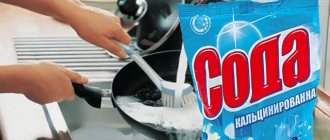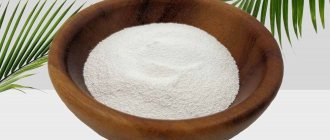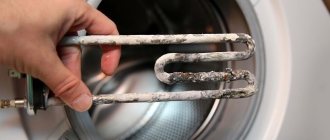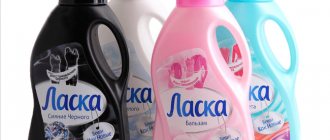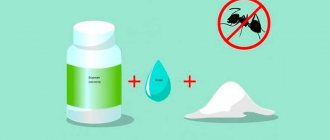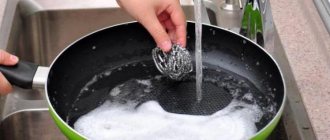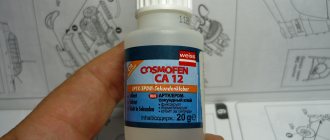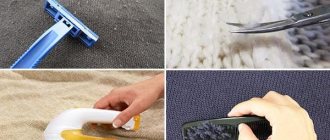Many housewives have heard about the miraculous properties of ammonia when washing glass. However, not everyone knows how to wash windows with ammonia correctly so that there are no streaks.
Spring and warmth require the housewife to spend a lot of time on restoring what has fallen into disrepair over the winter. One of the main tasks is high-quality window cleaning. This will allow the sun's rays to penetrate every corner of the house and make it brighter, and the hostess's mood joyful.
However, to achieve a good result, you need to try. Many people know how much effort cleaning windows takes. It is especially difficult to get rid of stains on them, but many ways have been invented for this case. The most popular and economical in cost is washing windows with ammonia, which is diluted in water. In this simple way you can achieve an ideal result and quickly get rid of unpleasant dirt.
If the housewife wants to get rid of dirt on the windows without extra effort and hassle and at the same time spend a minimum of money from the family budget, you need to use the tips given below.
Methods of using ammonia in the car interior
The action of ammonia is based on the nitrogen components that make up the product. Ammonia perfectly dissolves even stubborn dirt from textile upholstery and removes dirt on the windshield and side windows. The substance evaporates very quickly and leaves no streaks behind. Due to the specific smell, ammonia can remove even strong “odors” from cigarette smoke and spoiled food.
You can buy a bottle of liquid at any pharmacy; it costs no more than 50 rubles. There are different concentrations of the substance on sale, but it is better to take diluted solutions with a mass fraction of ammonia of 10%. Before use, the substance must be diluted in water or another solvent, and then proceed with cleaning.
For interior cleaning
Over time, any car textiles, be it seats or the ceiling, develop traces of dirt and greasy stains that are difficult to remove. Ammonia can easily remove such stains. You need to take 100 milliliters of warm water and dissolve 20-30 milliliters of chemical liquid in it. The solution is applied to a sponge and the cloth on which there is dirt is cleaned. For greater effectiveness, you can add a tablespoon of dishwashing detergent or grated laundry soap to the alcohol solution. Rub the product into the textiles, and then wipe off the remaining foam with a damp cloth. Along with the contamination, the unpleasant odor will disappear from the fabric.
If the stain is difficult to remove, then you need to make a lotion: apply an alcohol solution to a cotton pad and leave it on the stain for 20-30 minutes, then wash it off with water.
For cleaning glass
An alternative to windshield washer fluid is a mixture of ammonia and water. Alcohol quickly evaporates and leaves no traces behind; manufacturers add it to cleaning mixtures. You can make the solution at home yourself: dilute 30-50 ml of ammonia in 500 ml of water. Such a low concentration helps to effectively clean the glass from dirt and will not cause an unpleasant suffocating sensation for the driver. The solution can be poured into the windshield washer fluid reservoir or washed with it on the glass, and then wiped dry with a clean microfiber cloth. However, this cleaning method can only be used in the summer; in winter, the liquid freezes.
Anti-fog
Ammonia helps relieve surface tension and prevents the formation of condensation. To prepare an effective anti-fog agent, you need to mix:
- 100 ml water;
- 100 ml glycerin;
- tbsp ammonia.
The resulting solution is used to treat glass both outside and inside. It is better to park the car in the garage overnight so that the windows dry out. The liquid not only helps prevent glass from fogging up, but also helps protect against mud stains, raindrops and ice.
For washing the body
Those car owners who prefer to wash their car themselves without a car wash will appreciate this very simple car wash. It consists of:
Despite its simple composition, the liquid easily removes fresh dirt and traces of road chemicals from the paintwork. You need to soak a clean towel in the solution and wipe the car body several times; if the car is very dirty, you can add a couple more drops of any dishwashing detergent to the solution. The foam is applied to the paint with a sponge and then washed off repeatedly with water. You can also add a couple of drops of ammonia to clean water to wash off the foam; it will give the body additional shine, and minor scratches will become invisible.
Causes of windshield contamination from the inside
Snow, rain and dirt from under the wheels of cars do not affect the inner surface of the car glass. But dust and moisture penetrate into the interior and contribute to clouding. Drivers can also contribute to pollution through their actions. Here are the main reasons for internal visibility deterioration:
- The appearance of condensation on the surface . Dust and fumes settle in the cabin, and after drying, a thin cloudy film forms. In addition to dimming, it glares in the headlights at night.
- Ice crust in winter . Appears due to condensate freezing.
- Touching with hands . Even a faint fingerprint can interfere with your view.
- Smoking inside a car . In addition to the dust layer, the tars found in cigarette smoke coat the glass with a persistent yellow coating.
You can wash off dirt using universal preparations, but there are products that can wash the inside of a windshield from specific stains without streaks.
Adviсe
For ammonia to help with cleaning even more, you need to dilute it correctly and follow simple recommendations. If you handle the substance carelessly, you can get unpleasant consequences. Simple tips will help you avoid them:
- When washing with an ammonia mixture, you need to wear gloves. The substance quickly penetrates the skin and can cause an allergic reaction;
- The textile cleaning solution should first be tried on an inconspicuous area to see how the fabric reacts. If the color does not change, then you can wash the interior;
- ammonia is always used only in diluted form, otherwise you can get poisoned;
- It is not recommended to use an ammonia solution to clean leather and suede seats;
- Alcohol can only be dissolved in warm or cold water to prevent evaporation.
Ammonia for a car is a miracle remedy. For 50 rubles you can prepare a variety of products that will eliminate the constant costs of washing and polishing the body and the purchase of auto chemicals. All methods are easy to use and completely safe if you follow the instructions and clean regularly.
Ammonia is an aqueous solution of ammonia, a transparent liquid without color, but with a pungent odor. Its use is justified not only in the field of medicine, but also in everyday life. Many people recommend washing windows with ammonia - it helps dissolve complex stains and avoid streaks.
How to remove paint and tree sap from a windshield
The hardest part is removing the wood sap and paint from the front window. But this problem can also be overcome.
How to remove tar from a windshield
Washing tar from car windows is quite a tedious task. A car wash will not help in such a situation. But there are several options for cleaning your windshield quickly and effectively.
Most car manufacturers produce special products for cleaning tree resin. They can be purchased at gas stations or any automobile store. Almost all of them, with rare exceptions, act the same way:
- Read the instructions provided by the manufacturer on the packaging.
- Wash the car using soap and hot water. This will soften sticky dirt.
- Soak a soft cloth in a special cleanser and place it on the dirty areas. Press it and leave it for a while. The active substances will penetrate the stain and the resin will easily come off the surface.
- After a few minutes, wipe the windshield with light, circular motions. Don't overdo it or you may damage it.
If a special detergent is not available, use substances that dissolve the resin: alcohol, turpentine, gasoline, white alcohol, bitumen stain cleaner. But remember that you cannot use hard sponges or rags to clean the surface. Otherwise, the glass may be scratched.
We recommend
How to remove paint from a car windshield
Unfortunately, many motorists sometimes need to remove varnish or paint from the surface of their car. Often these are the consequences of vandalism and hooliganism. It happens that paint and varnish materials get on the body if something is being painted in the neighborhood.
Factory-made paints have adhesion. This means that they easily stick to any surface due to chemical or mechanical action. Thus, if paint gets on the car body or glass, it will not be easy to remove.
In this case, what is the best way to clean the windshield inside and out? There are several ways. If the paint stain has dried, then it is removed with a plastic spatula in the same way as from an apartment window during painting. Whatever remains is removed with a rag and solvent. If the spatula does not help, you can clean the window using a razor blade. Do this with careful movements parallel to the glass to avoid leaving scratches.
We recommend another proven and effective method for cleaning glass from varnish and paint. Using a hair dryer, heat the paint on the window until it becomes soft, and then remove it with a scraper. This method only works well with a thick layer of paintwork. Thin - it is better to clean with chemicals.
Today in stores you can find a variety of products that help remove any type of paint from the windshield, so it is quite difficult to give recommendations. It is better to tell the seller which stain you need to remove, and you will receive professional advice.
Follow the instructions when cleaning. It is difficult to determine by appearance what kind of paint left a stain on the windshield. Doing a chemical analysis of contamination is, of course, unnecessary. It’s better to buy a universal remover, for example, Antikras-Universal. It helps to get rid of any paint left on a variety of surfaces.
How to clean a windshield without streaks from the inside and outside using a remover? Moisten a cotton swab with the product and blot the paint stain. After five minutes, start scrubbing away the dirt. Change the cotton wool as often as possible. A soft cloth will do as an alternative. It must be clean so that there are no streaks from paint that has already dissolved. Ideally, combine both methods of removing paintwork: washing and a sharp blade.
What you will need
Before starting the process, it is advisable to prepare all the necessary tools. At home, this will require a container in which ammonia and water will be diluted. In advance you will need to find a sponge or soft lint-free cloth - in general, anything that will be convenient to work with. When working on large areas, it is recommended to use a spray bottle.
Washing windows with ammonia will not work without:
- paper, magazines or newspapers - they will help wipe off the applied product;
- soft cloths, with the help of which the remaining composition is removed from the glass;
- rubber gloves, plastic goggles and other safety equipment - some women even use polyethylene raincoats to protect their skin and clothing.
When cleaning windows, you will need to reach distant surfaces. In a private house or apartment with a high ceiling, it is best to use stepladders and sliding stairs.
We use a special mop
If your house has very high windows, it is best to clean them with a special mop. Such options are sold in any hardware store and are not very expensive. The mop tip is double-sided, which is very convenient. On one side there is a sponge attached, and on the other there is a rubber scraper, which is used to polish the surface.
Mops are equipped with long handles, which allows them to reach the most difficult to reach places. This device can be used when washing windows with a solution of ammonia, and with the use of factory detergents. The most convenient way is to take a spray bottle to apply the solutions to the glass, and then wipe everything with a sponge and scraper. It must be remembered that the spray gun only works in a vertical position.
Ammonia is one of the most effective and inexpensive means for high-quality cleaning of windows without streaks. This solution does its job better than many expensive advertised products.
If the smell of ammonia seems unbearable, you can try replacing it with another inexpensive product that has proven to be effective. This can be ordinary vinegar or a solution of potassium permanganate. All these means give good results with a minimum of cost and effort.
How to dilute ammonia - composition recipes
For a composition with ammonia to be effective, certain proportions must be observed.
- If the composition does not intend to use additional agents, then you need to dilute five drops of ammonia in five liters of water. The resulting mixture is thoroughly mixed.
- The composition can be improved. Glycerin is most often used for this. The following proportions are observed: add the same amount of glycerin and five ml of ammonia to 200 ml of water. The advantage of the composition is not only the thorough cleaning of the windows, but also the further protection of the plastic from spraying or the appearance of ice.
Suitable Cleaning Tools
To properly clean the surface from the deposits that have appeared, you need to use a special cleaning material. A simple rag is suitable as a temporary remedy - to brush off dust, wipe a sweaty area, or first remove traces of accidentally spilled liquids.
You need to clean the stains in two stages: first wash with a cleaning agent, and then rub until any possible stains are completely eliminated.
Soft sponges and microfiber cloths are good cleaning tools. You can use a polishing applicator with a finger pocket. They are convenient for wiping the glass from the inside of the car and washing away dirt from the joints. There are also special squeegees for auto glass.
To wash the glass in your car without leaving a trace of streaks, you need to not only remove dirt and film, but also wipe the entire surface dry. For this purpose, the best materials are:
- thin, dense fabric without lint;
- faux suede;
- special rags with a label “for streak-free glass”;
- crumpled newspapers;
- paper napkins without a loose structure that leaves pellets behind.
Newsprint has two advantages. It can be changed frequently by rubbing the surface until shiny with dry material. Traces of lead from printing ink form a weak film that prevents dust and other substances from adhering to it.
Washing steps
It is first necessary to remove all excess from the windows (blinds and sashes) to facilitate access to the glass. It is recommended to remove the largest areas of dirt, as well as dust and cobwebs using a mop or a special brush.
Windows are washed according to the following algorithm:
- Dip the sponge into the prepared solution, wring it out thoroughly and wipe first the frames, then the window sill and slopes.
- To clean hard-to-reach places, such as window hinges or sashes, use cotton swabs. They can be replaced with toothpicks and cotton wool.
- After this, take a new sponge (the old one is thoroughly washed in warm water). It is moistened in a solution of ammonia and the windows are wiped from top to bottom. This is necessary to ensure that there are no dirty areas left on the glass.
- Wipe the glass units dry using newspapers or paper. If you don't have them on hand, you can use a clean cloth, but polishing should only be done with dry materials. In this case, there will be no divorces left.
- At the last stage, we finish washing the remaining elements, including sashes or blinds.
Fighting nicotine plaque
Not all means can cope with such a problem. It will take at least 3-4 times, which is too long. Even if you want to buy a professional aerosol, look carefully at the composition, it should contain “ammonium alcohol”, it is this that corrodes everything perfectly and does not leave streaks.
This is especially true if headlights are blinding at night. The problem here is not in their poorly adjusted light, but in the oil deposit on the glass, which works on the principle of a regular lens.
The meaning is the same, we apply the substance along the entire perimeter of the glass, wait until it sets, and quickly remove it, constantly squeezing the rag or using paper towels.
You can, of course, use the old-fashioned method - old newspapers, but the tactile sensations from this are not entirely pleasant, plus, if the paper is very old, it will begin to fray from moisture, leaving marks on the glass.
If you work during the day, check the work with a flashlight. Even a telephone will do. Shine light from different angles and peer at the glass. If you notice streaks, repeat the procedure in these places. Few people manage to do everything perfectly the first time.
Precautionary measures
When working with ammonia at home, it is important to remember your own safety. To do this you need:
- before starting work, open the windows and ensure a flow of fresh air - it is important that the room is ventilated not only during washing, but also after that, because staying in a room with unpleasant odors for a long time can cause illness;
- use personal protective equipment (the minimum is gloves and goggles, but it is recommended to supplement them with a respirator to protect your respiratory system);
- have access to running water so that if liquid gets on your skin or eyes, wash the affected areas as soon as possible.
It is not recommended to use other household chemicals together with ammonia. This is especially true for products that contain chlorine. The fact is that as a result of their compounds, dangerous evaporation will occur, which can threaten health.
Cleaning in winter
The actions here are not very different from those described above, except for a few but:
- Before work, you need to warm up the interior; in the cold, not a single product will work as it should;
- The work itself will be less convenient, since everything will have to be done from the inside, with the doors closed;
- The rag must be completely dry, otherwise it will not absorb properly;
- You can use old special rags only after washing, otherwise they will leave streaks;
- Place the bottle (or balloon) on the mat, in the place where the stove blows on your feet, this will heat it up quite quickly and restore the cleaning properties of the composition. You just need to read the instructions, which will clearly indicate that use is only possible at temperatures above 5 degrees.
Advice
: such rags can be ordered from AliExpress, they cost about 70 rubles for a set of 3 pieces, you won’t find it cheaper in any auto store.
Pros and cons of the method
This streak-free window cleaning method has both advantages and disadvantages.
The advantages include the following:
- Acceptable price. A bottle of ammonia will cost much less than special solutions intended for these purposes.
- The method is quite simple. Yes, you need to prepare some tools in advance, but every home has them on hand. In addition, there is no need for lengthy preparation - the windows can be washed immediately after preparing the solution.
- The most important advantage for any housewife is efficiency. After all, with the help of ammonia you can quickly remove any stains, as well as dust or dirt, which will not harm the plastic profile or the glass itself.
The disadvantages of the method include a specific smell, which many will find unpleasant. You can get rid of it only after thoroughly ventilating the room for several hours.
Another disadvantage is the threat to the nasal mucosa or skin. To avoid such a danger, it is recommended to use rubber gloves and even a respirator while working.
Using a solution with ammonia, you can bring any glass objects to perfect shine. If there is a little solution left after washing the windows, you should not pour it out, because it can be used to clean many other items in the house.
Several times a year, new activities are added to our classic cleaning routine. One such activity is window cleaning. This process is not at all complicated, one might even say ordinary, but for a first-class result it is necessary to use a high-quality product.
To keep windows this clean, they need to be washed.
Today we would like to tell you how to clean windows without streaks using ammonia, as well as a recipe for preparing a detergent based on it.
Cleaning sequence
In order for this process to be completed successfully and as quickly as possible, it is necessary to follow the sequence of actions.
First of all, you will need to thoroughly clean all window sills and window profiles. This is very important, and without carrying out this procedure you should not start washing the glass itself. First you need to remove the curtains or blinds and get rid of everything that is located on the windowsill. These items will interfere with the work process and may be damaged by water that gets on them.
A few words about ammonia
Ammonia is obtained from ammonia when diluted with water, in particular it is a 10% solution of ammonium hydroxide. The name “ammonia” is a common one, since this solution has little in common with alcohol.
By the way, ammonia is a completely different product, ammonium chloride, it looks like a white, odorless powder, and is actively used as a fertilizer.
The sharp and very penetrating smell of ammonia is known to everyone. This composition is often used to give the body some tone, to bring people out of an unconscious state, for which it is sniffed very carefully.
Note that ammonia perfectly dissolves various acids, so it copes with contaminants in different forms. It is also used to add shine to glass and protect it from repeated contamination. To remove dirt and polish glass, it is enough to make the right solution.
Preparation of the solution
To prepare the solution with which we will wash and polish windows, it is necessary to strictly maintain the proportions of the ingredients. There are several recipes for a solution for removing dirt from windows, and they are all identical in terms of effectiveness.
To wash glass and windows, we can make a solution in the following proportions:
- Recipe No. 1 for washing - the solution is obtained by mixing 5 liters of water and 5 milliliters of ammonia. (Imagine how powerful ammonium solution is.)
- Recipe No. 2 for polishing - to create a solution according to the second recipe we will need: 200 milliliters of water, 500 milliliters of glycerin, 5 drops of ammonia.
- Recipe No. 3 is general - to create a powerful product suitable for both washing and polishing glass, the dosage is as follows: 5 drops of ammonia per 200 ml of water, without glycerin.
Standard jar of ammonia
I would like to note that ammonia is still intended to bring glass near windows to a shine, since it has difficulty coping with heavy dirt. For stubborn, greasy stains, use a good detergent. Only after the windows have been washed and wiped dry, a solution of ammonia comes into play, which polishes the glass to a shine and prevents rapid contamination of the windows.
It is believed that ice does not form on windows treated with ammonia in the winter.
Top 3 alternatives
In addition to using ammonia, other products that can be found in the household will help you achieve good results in washing glass. What they have in common is that they are affordable and provide good cleaning performance.
Vinegar
Depending on the degree of neglect of the window, a solution suitable in concentration is selected. The standard recipe involves preparing a mixture of ½ liter of water, a quarter cup of vinegar and less than half a teaspoon of dishwashing gel.
This composition effectively removes dirt and stains. At the same time, the glass itself acquires shine and is completely streak-free.
Dentifrice
Chalk or tooth powder is suitable when the glass is very dirty.
To do this, you need to dilute 50 grams of powder in a liter of water . The resulting composition is applied to the glass and cleaned off with a napkin after drying.
Particularly dirty areas can be treated separately by preparing a cleaning mixture in the form of a slurry. The recipe is similar, only much less water is used.
Onion
A head of onion cut in half is quite capable of coping with persistent stains on windows - drips, traces of insects, etc.
To remove stains, rub the problem area with a fresh cut . After this, the window is washed in the usual way.
Cleaning an entire window with an onion is labor-intensive, but it is very suitable for removing local stains.
A few more ways to clean windows using improvised means are presented in the video:
